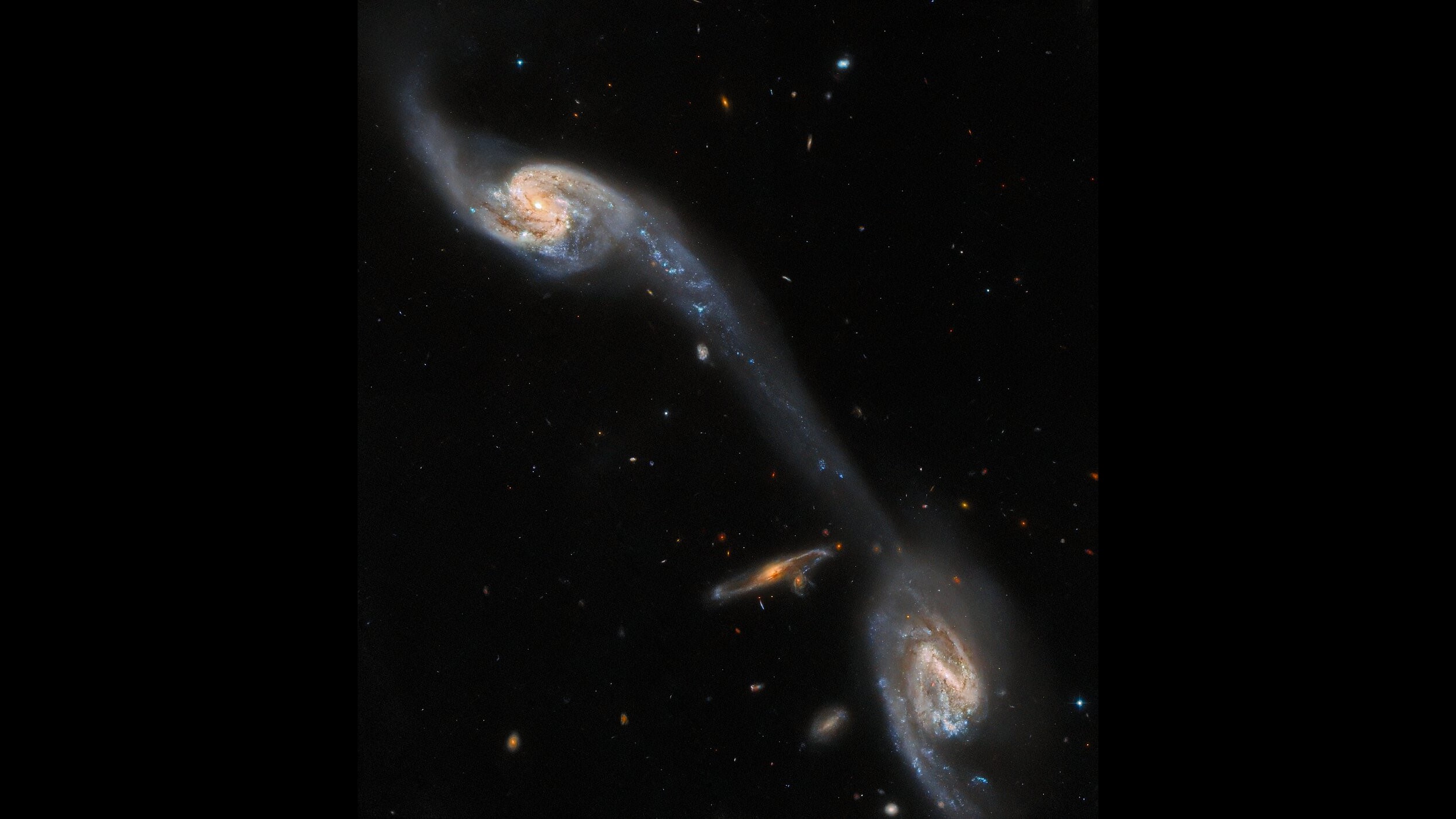Hubble Space Telescope captures stunning intergalactic bridge of stars in new image
The tidal tail of Wild's Triplet dazzles in new Hubble photo.

Stretching like a celestial bridge across space, Arp 248 — also known as Wild's Triplet — is a spectacular sight for keen-eyed astronomers.
The Hubble Space Telescope offers a new view of the mesmerizing trio in a photo released on Oct 31 that shows the dynamism of tidal tails at play, according to a statement from the European Space Agency, a partner on the mission. A tidal tail is an elongated trail of gas, dust, and stars formed by the mutual gravity of the two galaxies. In the new image, a tidal tail from one of the two foreground galaxies appears to connect the pair of galaxies, while the third galaxy in Wild's triplet is just outside of the frame of the Hubble photo.
The two foreground galaxies in Wild's Triplet are located about 200 million light-years from Earth in the constellation Virgo. The unrelated galaxy in the background is much farther away and isn't interacting with the triplet. The system was first discovered by astronomer Paul Wild in 1953 while working with Fritz Zwicky at Caltech.
Related: The best Hubble Space Telescope images of all time!
The trio is included in both "A Catalogue Of Southern Peculiar Galaxies And Associations," produced by astronomers Halton Arp and Barry Madore, and "Atlas of Peculiar Galaxies," by Arp. These collections feature unusual galaxies, including Arp 248 alongside galaxies with odd numbers of arms, peculiar structures and more.
Hubble is working its way through the galaxies included in the catalogs. The Wild's Triplet photo comes from its Advanced Camera for Surveys, which is searching for potential candidates for follow-up observation using more sophisticated instruments, like the James Webb Space Telescope and the Atacama Large Millimeter/submillimeter Array (ALMA) in Chile.
Given the overwhelming number of objects in the sky that scientists could study, projects such as Hubble's tour of Arp galaxies are helpful in narrowing down targets for more in-depth observations, since the limited amount of telescope time available to astronomers makes that time very precious. Knowing in advance that something about a target sets it apart from the rest is a great way to narrow things down and make the best use of limited resources.
Get the Space.com Newsletter
Breaking space news, the latest updates on rocket launches, skywatching events and more!
Follow us on Twitter @Spacedotcom and on Facebook.
Join our Space Forums to keep talking space on the latest missions, night sky and more! And if you have a news tip, correction or comment, let us know at: community@space.com.
John is a science and technology journalist and Space.com contributor. He received his B.A. in English and his M.A. in Computer Science from the City University of New York, Brooklyn College, and has bylines with TechRadar, Live Science, GamesRadar, and other publications. You can find him on Bluesky at @johnloeffler.bsky.social or seeking out dark sky country for spectacular views of the cosmos.









